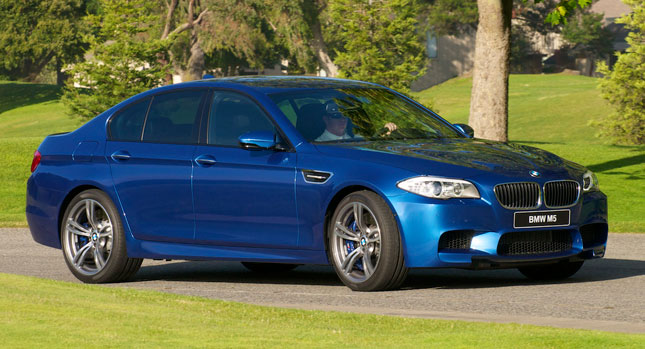Like its predecessors, the new 2013 BMW M5, which received its public debut at the 64th Frankfurt Motor Show, is based on the regular 5-Series sedan with some subtle exterior modifications but a whole lot of changes under the skin.
Now, some may think that BMW’s M Gmbh performance division simply took a 5-Series sedan, beefed it up a bit and shoehorned the twin-turbo V8 found in the X5 M and X6 M SUVs under it’s hood. However, Maximillian Ahme, the man that led the M5’s development team, says that’s not the case.
In an interview with the BMW M magazine, Ahme shed some light on the development and the unique features of the latest M5 super saloon.
Asked about when work began on the F10 M5, Ahme said: “Two to three years must be allowed for testing the development of a BMW M. In some cases, predecessor vehicles are used in the first phase, enabling initial engine tests to be carried out, for example. However, this is just a short phase. The fine tuning then involves the latest models.”
Ahme added that approximately 2 million kilometers (1.24 million miles) were covered during the development phases of the new M5.
 What about that engine? Ahme dismisses the notion that the M Division simply used the same engine found in the X5/X6 M models:
What about that engine? Ahme dismisses the notion that the M Division simply used the same engine found in the X5/X6 M models:
“The engine of the BMW M5 has been almost completely redesigned. In essence, the only feature it has in common with the engine of the X5/6 M is the bank angle (90 degrees) and the cylinder spacing. The specification sheet also indicated a higher maximum rotational speed of 7,200 rpm.”
Ahme explains that a lot of features were added or changed including the larger charge-air coolers, an optimized Valvetronic valve timing, a new cylinder head and a wet sump with an additional oil pump.
The M5 also uses a double-clutch transmission instead of the conventional torque-converter automatic found in the X5 M and X6 M SUVs.
As far as the chassis is concerned, Ahme says that the front axle was reinforced and has a more rigid connection to the bodywork, while the tracks were widened and the rear multi-link suspension doesn’t have any rubber bearings for a more direct feel.
With standard tires, maximum lateral acceleration can reach up to 1.2 g, though Ahme stresses that, depending on the surface, the M5 can achieve 1.3 g or “perhaps even a little more on the Nürburgring circuit”.
Ahme previously suggested that all-wheel drive might become an option for the M5, as it would be the only way to harness additional power.
“In view of the performance and torque of the BMW M5, this might be considered an option. However, we believe any advantage is outweighed by the disadvantages of the all-wheel drive. More weight due to four driven wheels means higher fuel consumption and a shift in the axial load in the direction of the front axle,” said Ahme.
“However, we are particularly concerned with a balanced distribution of weight for the driving performance typical of the M. We also had to position the engine higher, which would have led to a higher centre of gravity,” he added.
PHOTO GALLERY




































 VIDEO
VIDEO